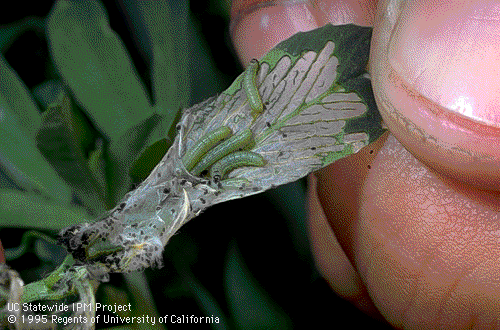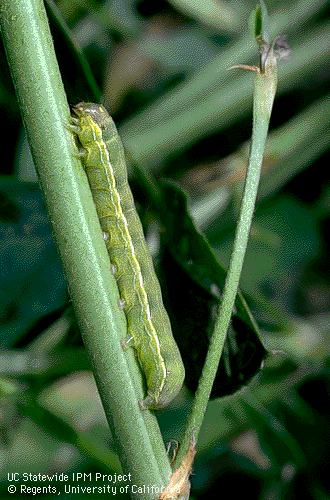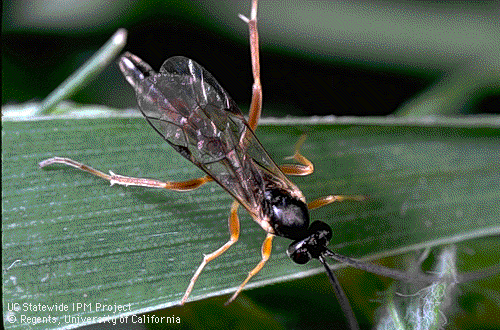|
Many plants developed defense systems against damaging agents. Protection against insects feeding on leaves or other parts of plants may involve not only direct chemical warfare, but also employ the assistence of other insects parsitizing in the leaf eaters. To achieve this, the plants release volatile substances to call the attention of the parasitizing insects. The induction of the synthesis of the insect attractants is a multistep biochemical chain involving jasmonic acid. The induction is initiated by damage to the plant's tissue by biting insects.
In a research project at the University of California it was tested in a field experiment if by treating plants with jasmonic acid the defence mechanism of parasitism of herbivores could be enhanced. Test plants were tomatoes, the damaging insects were Beet armyworms and their parasites wasps.
|
 |
|
leaf damage by larvae of Spodoptera exigua |
||
 |
||
larva of Spodoptera exigua |
model of jasmonic acid |
|
The result of spraying the tomato plants with a solution of jasmonic acid was indeed an increase in parasitism. Thus the natural compound jasmonic acid may help to reduce agronomic losses by herbivores.
Experimental details: J S Thaler, Jasmonate-inducible plant defences cause increased parasitism of herbivores, Nature 399 (1999) 686-688
Photographs: |
 |
|
adult wasp Hyposoter exiguae |
||